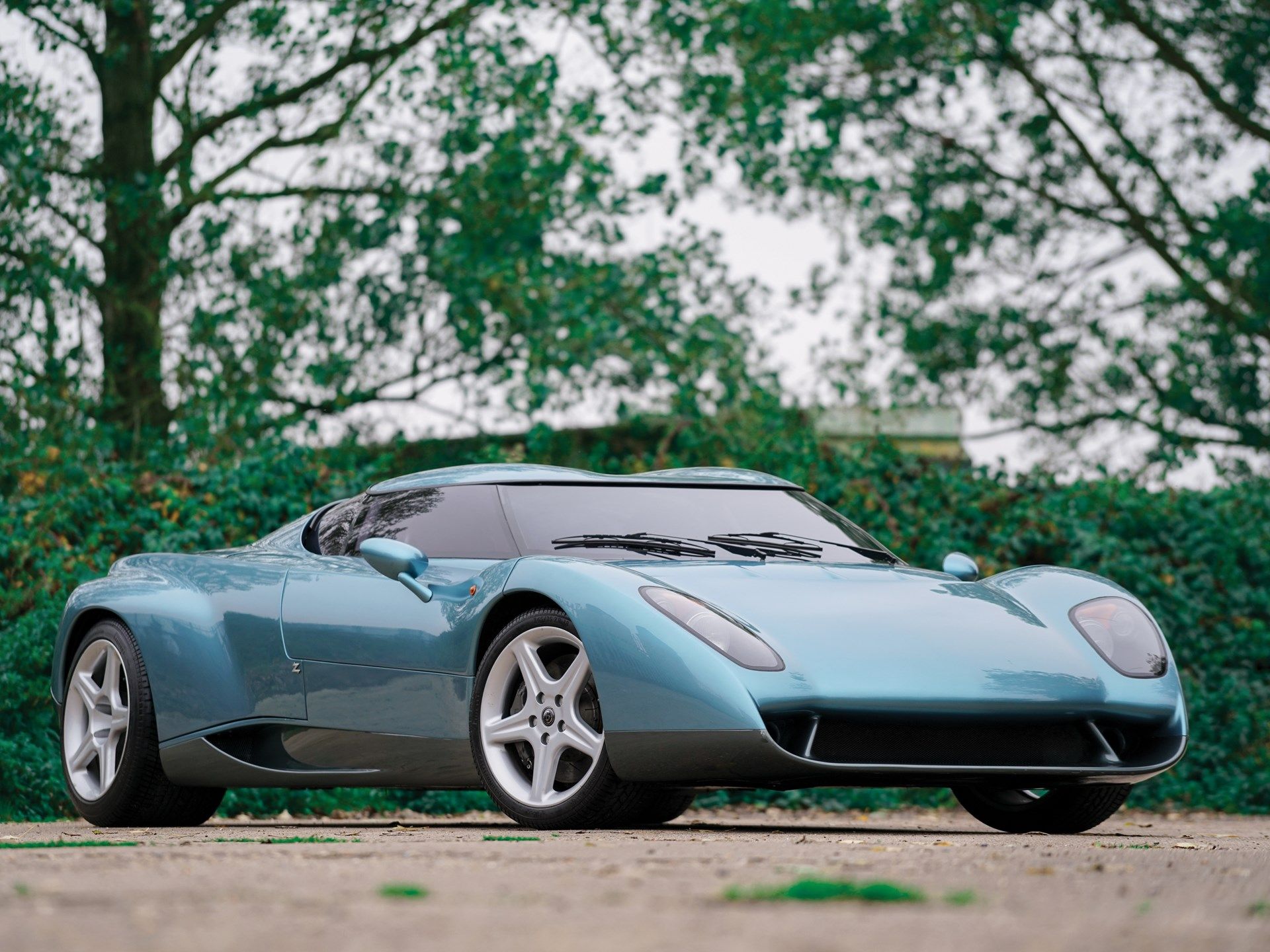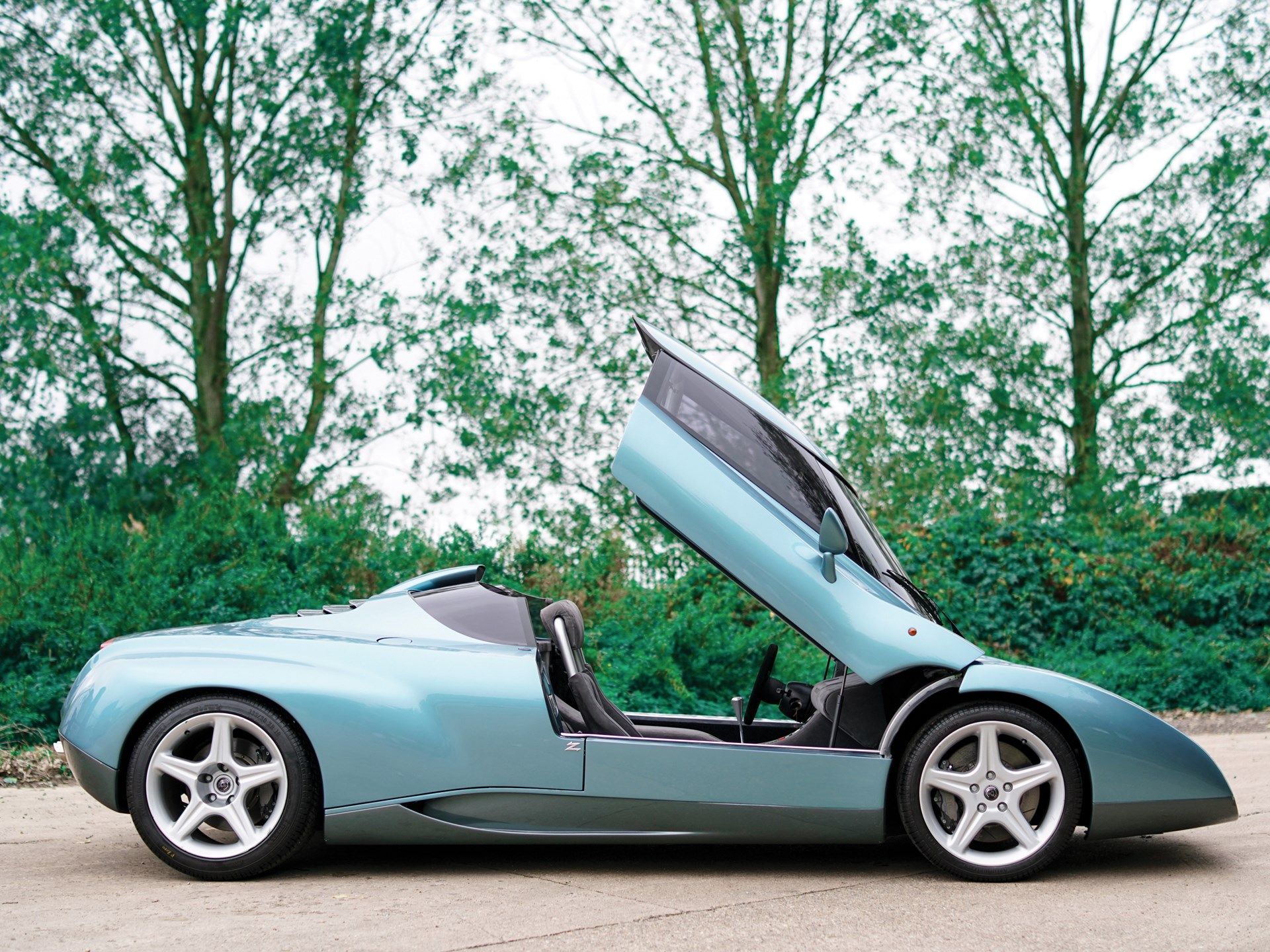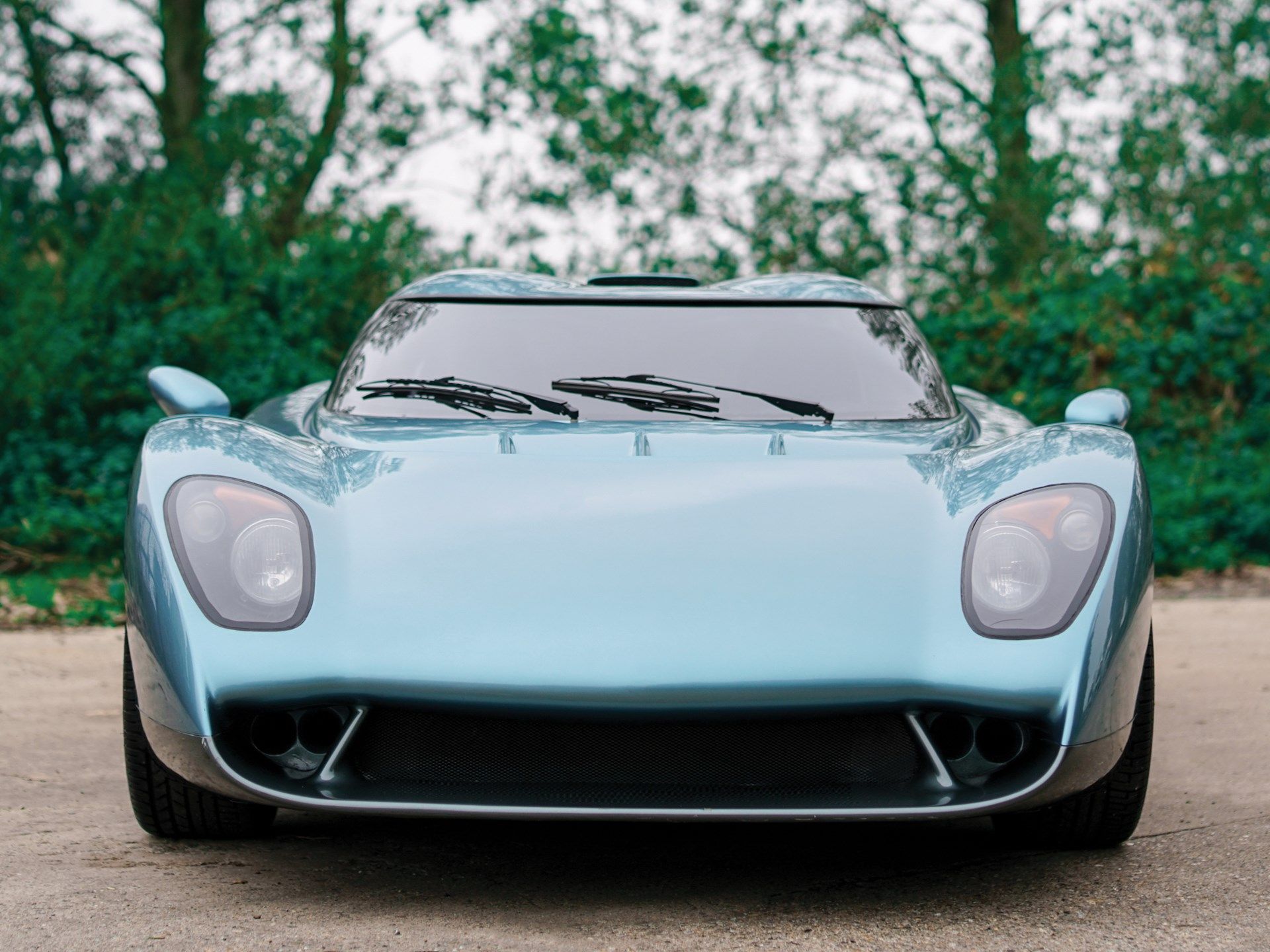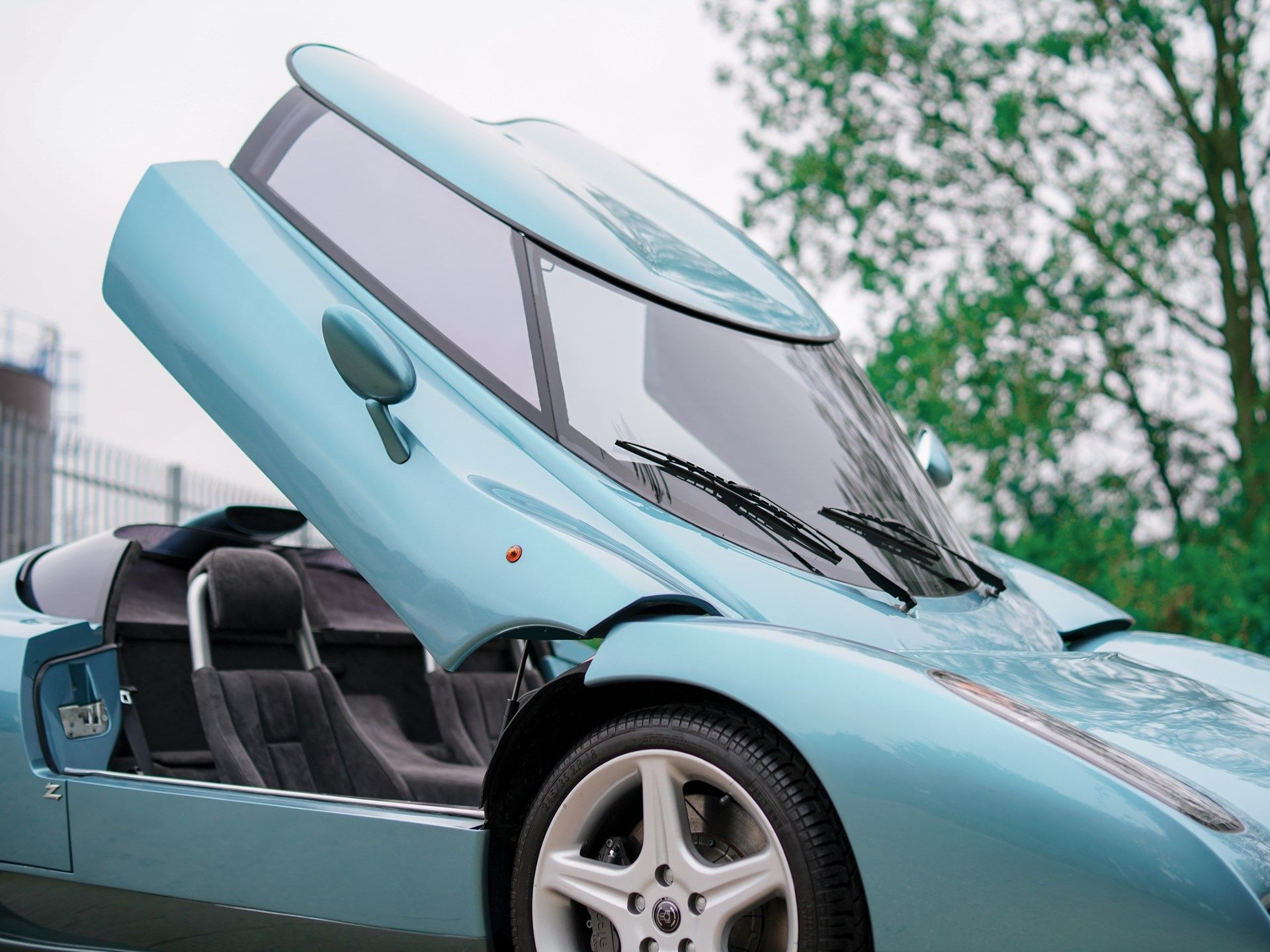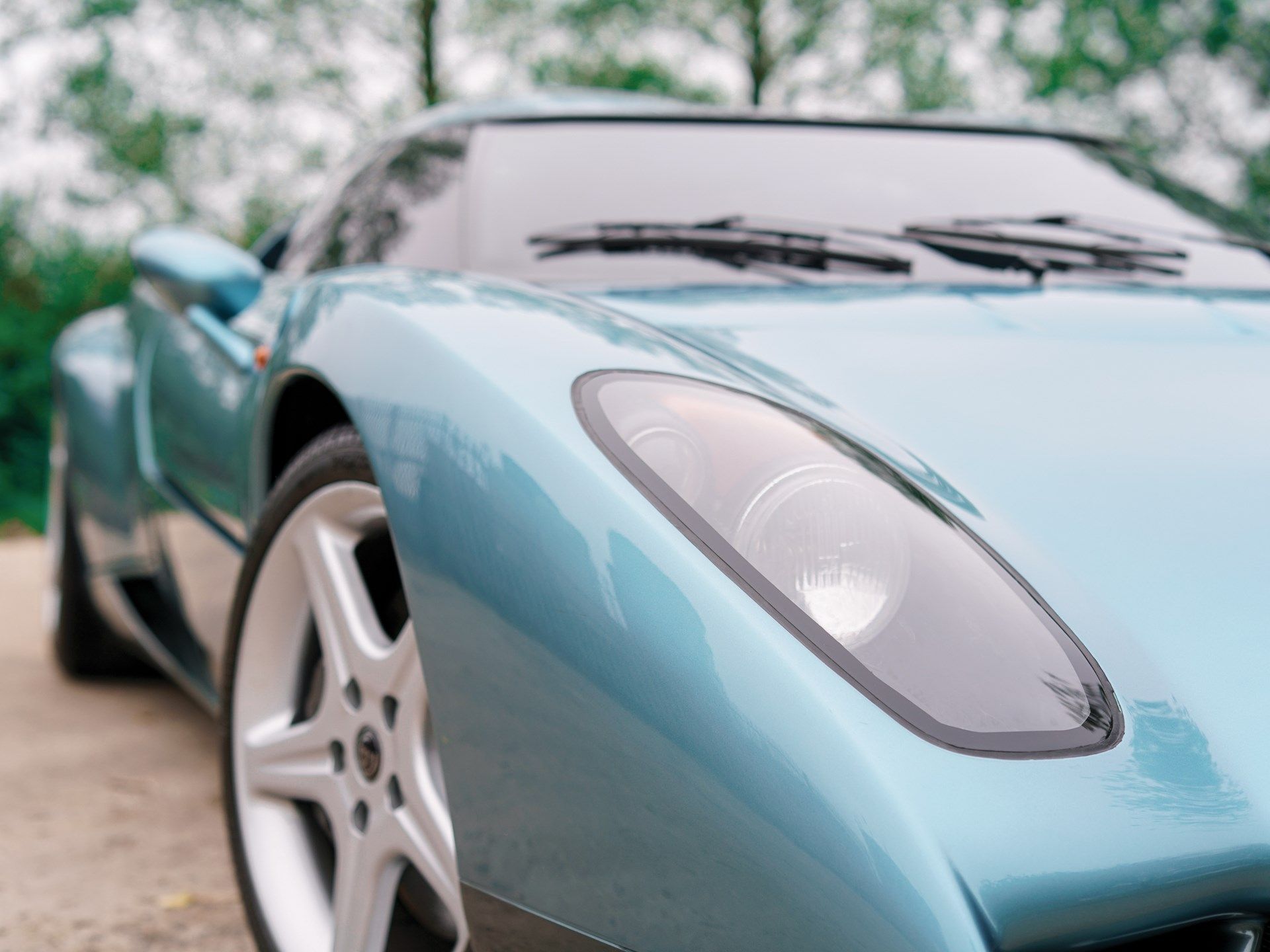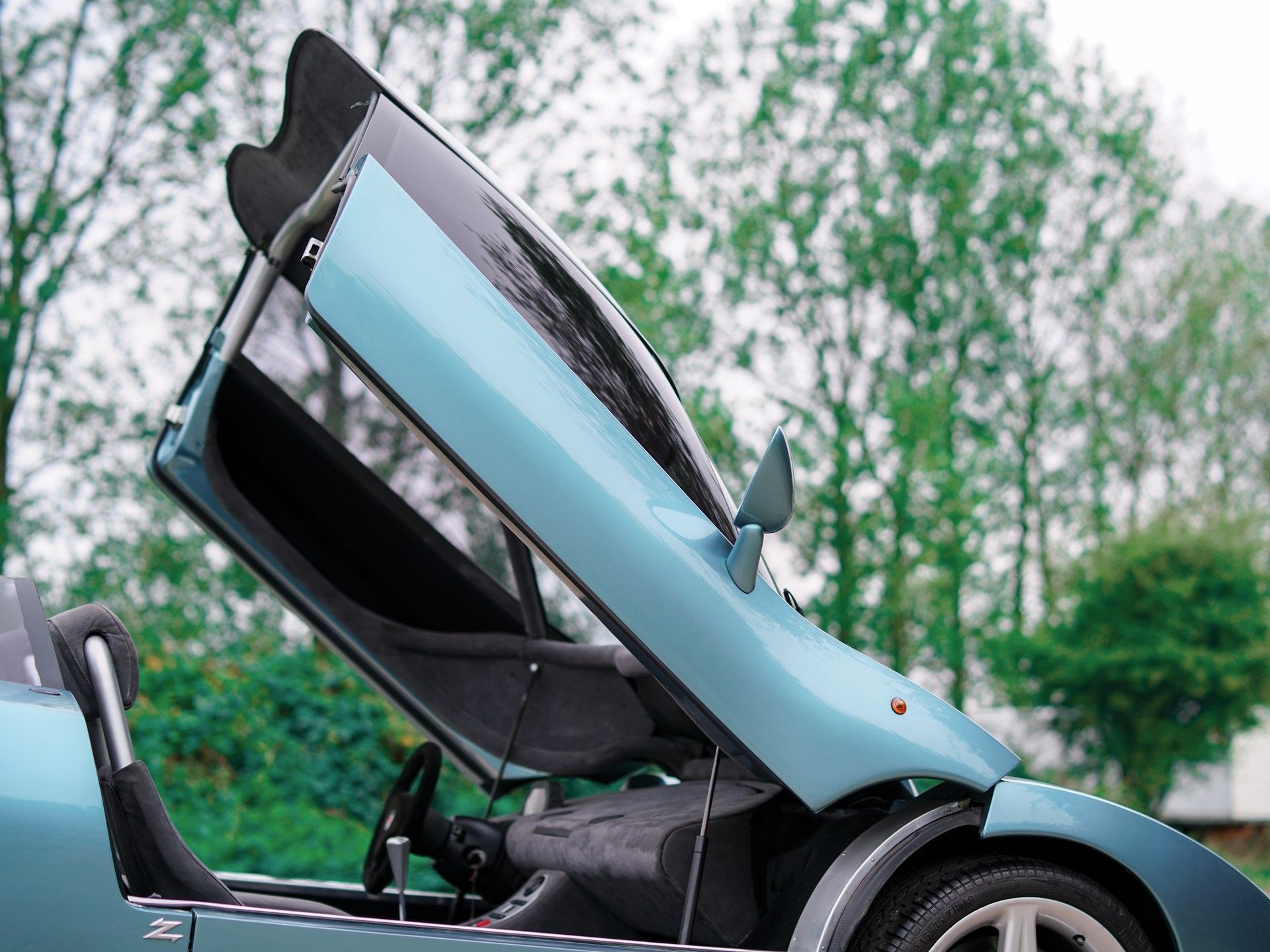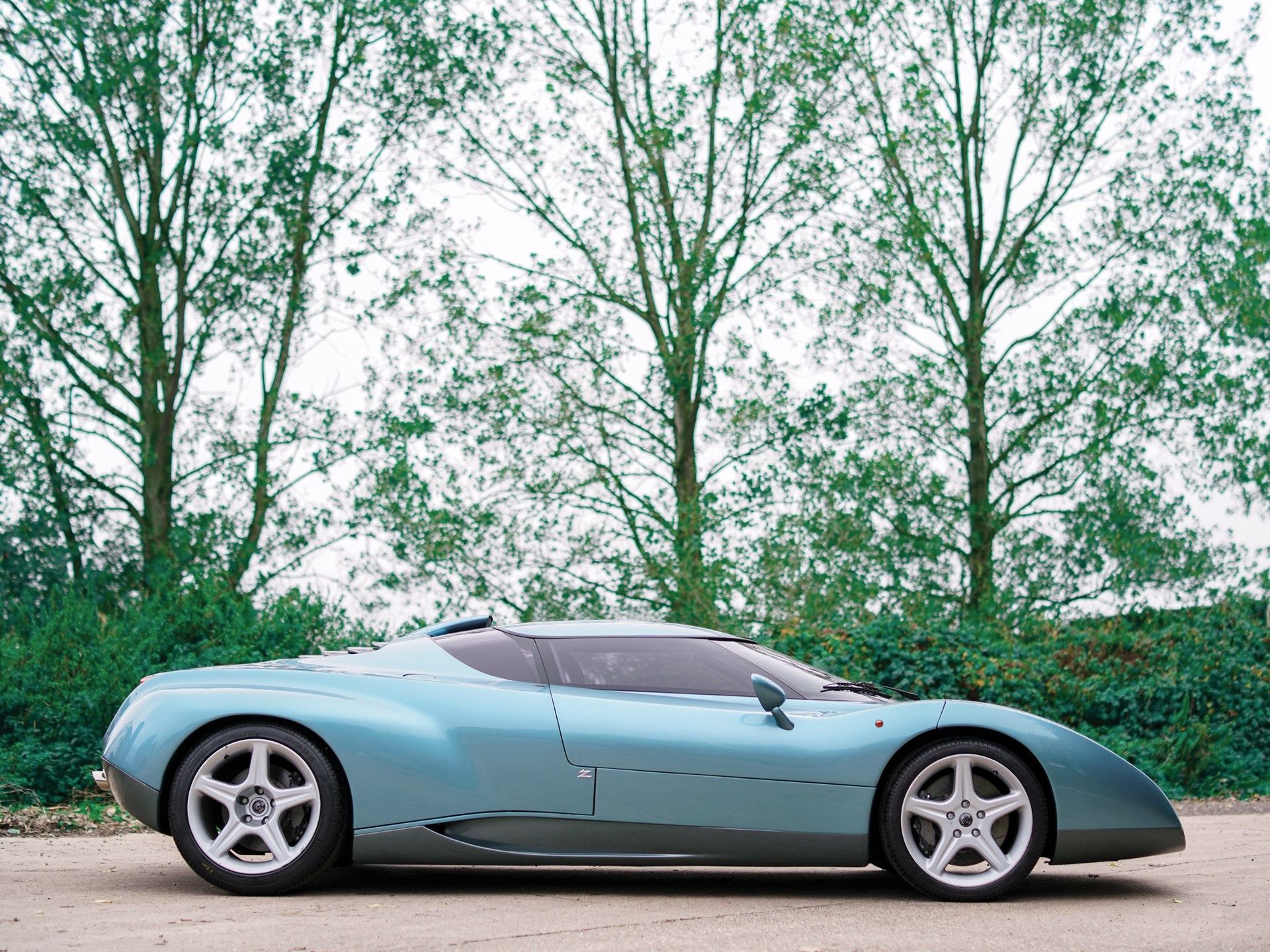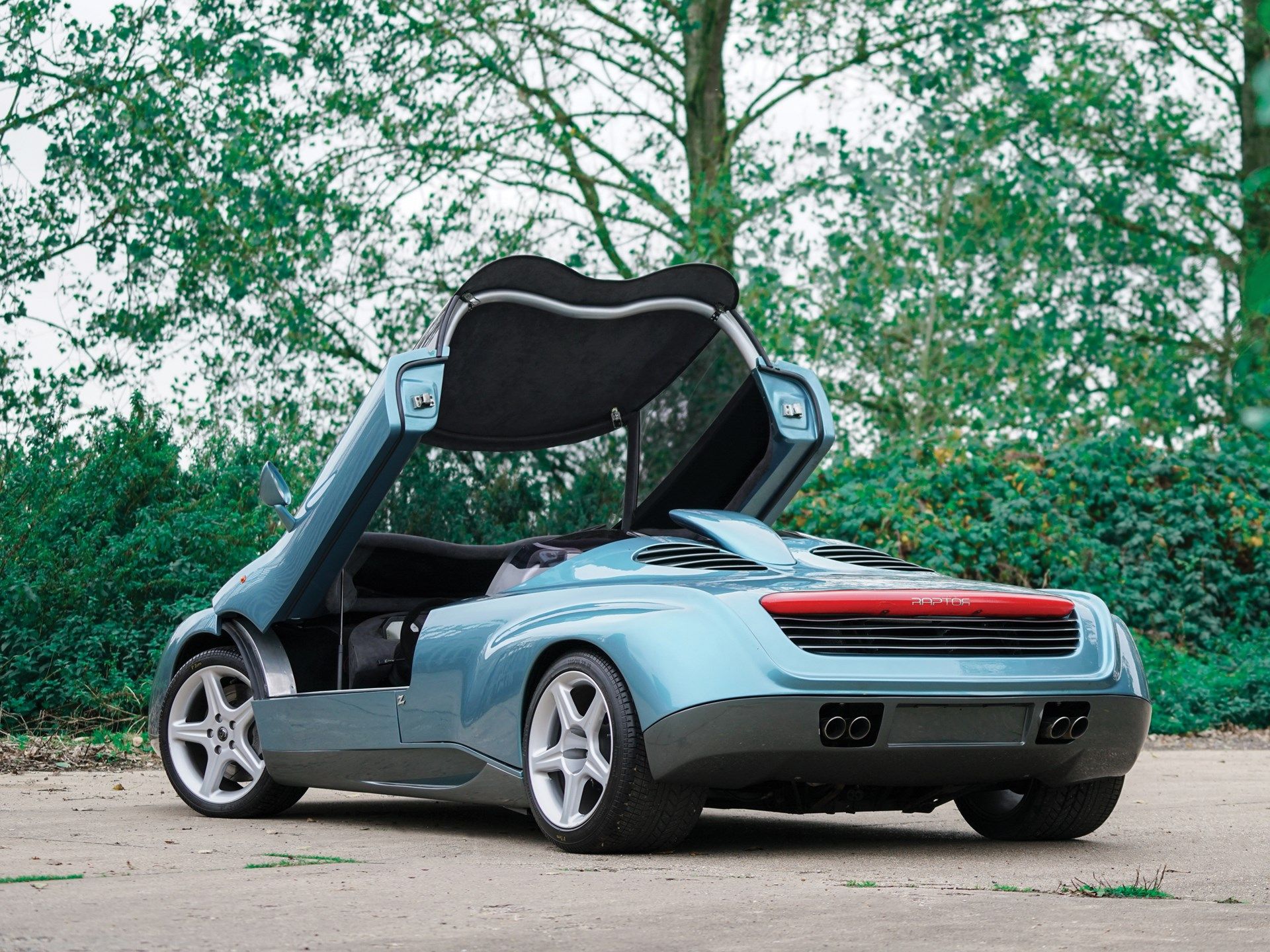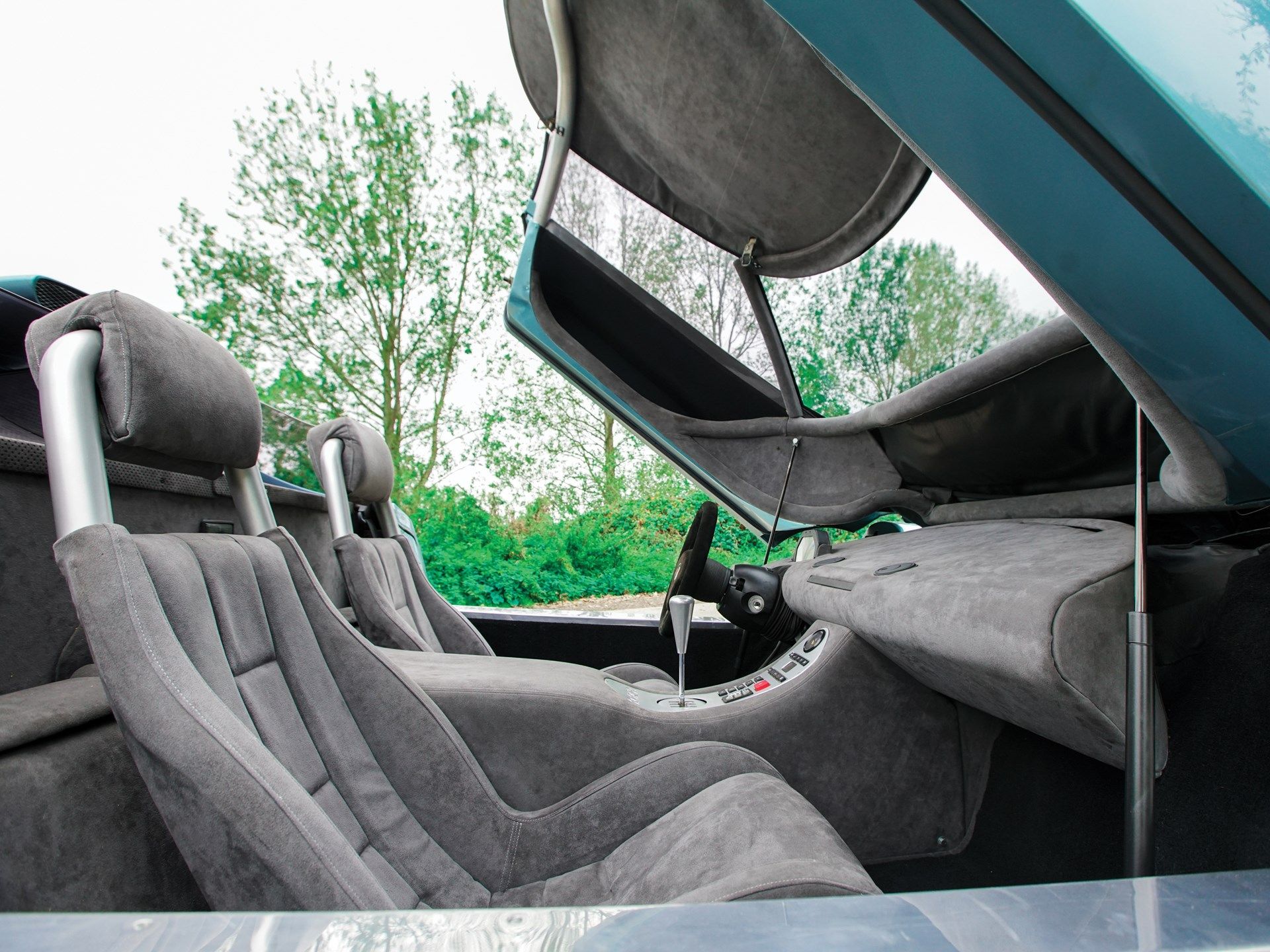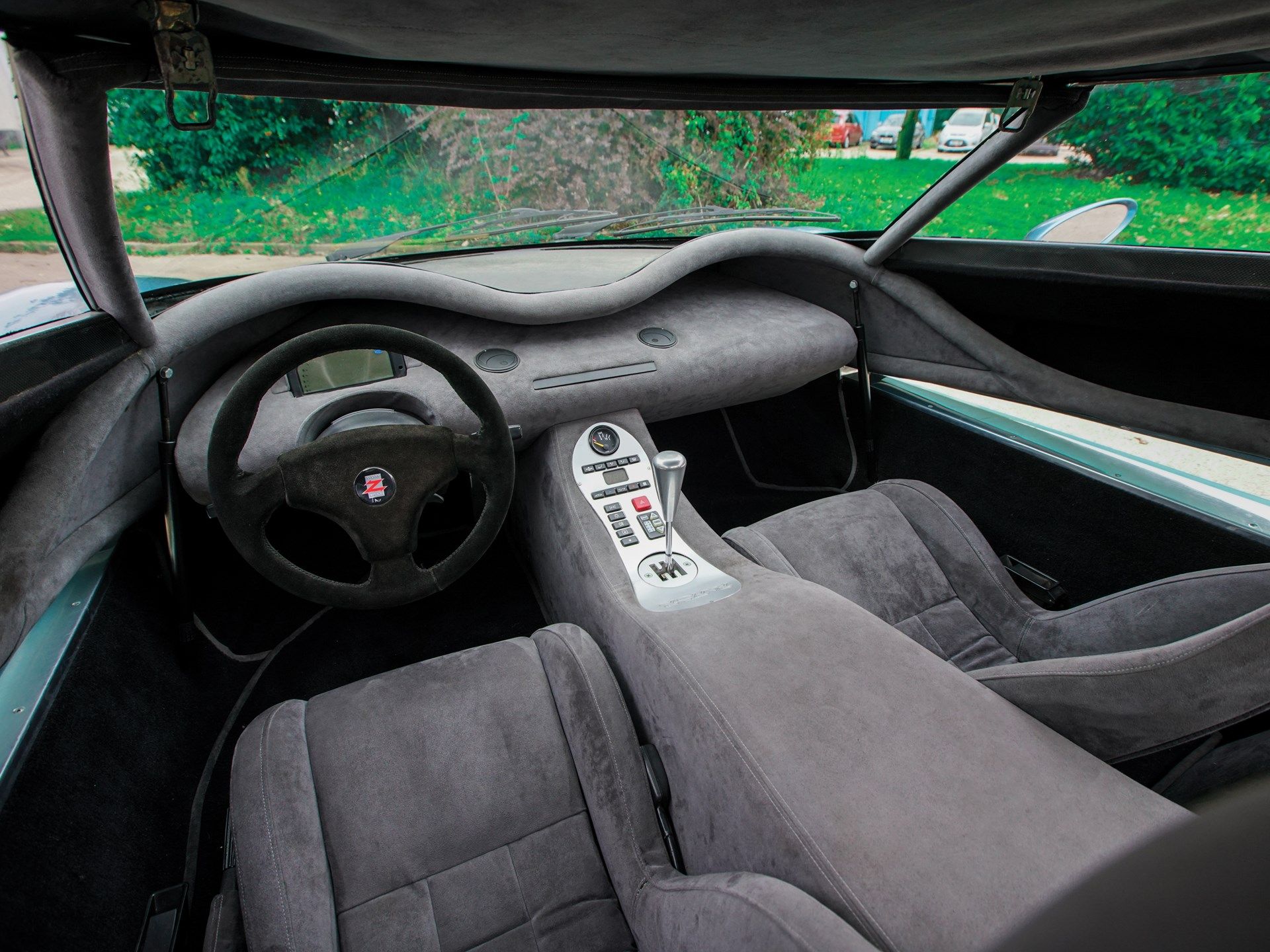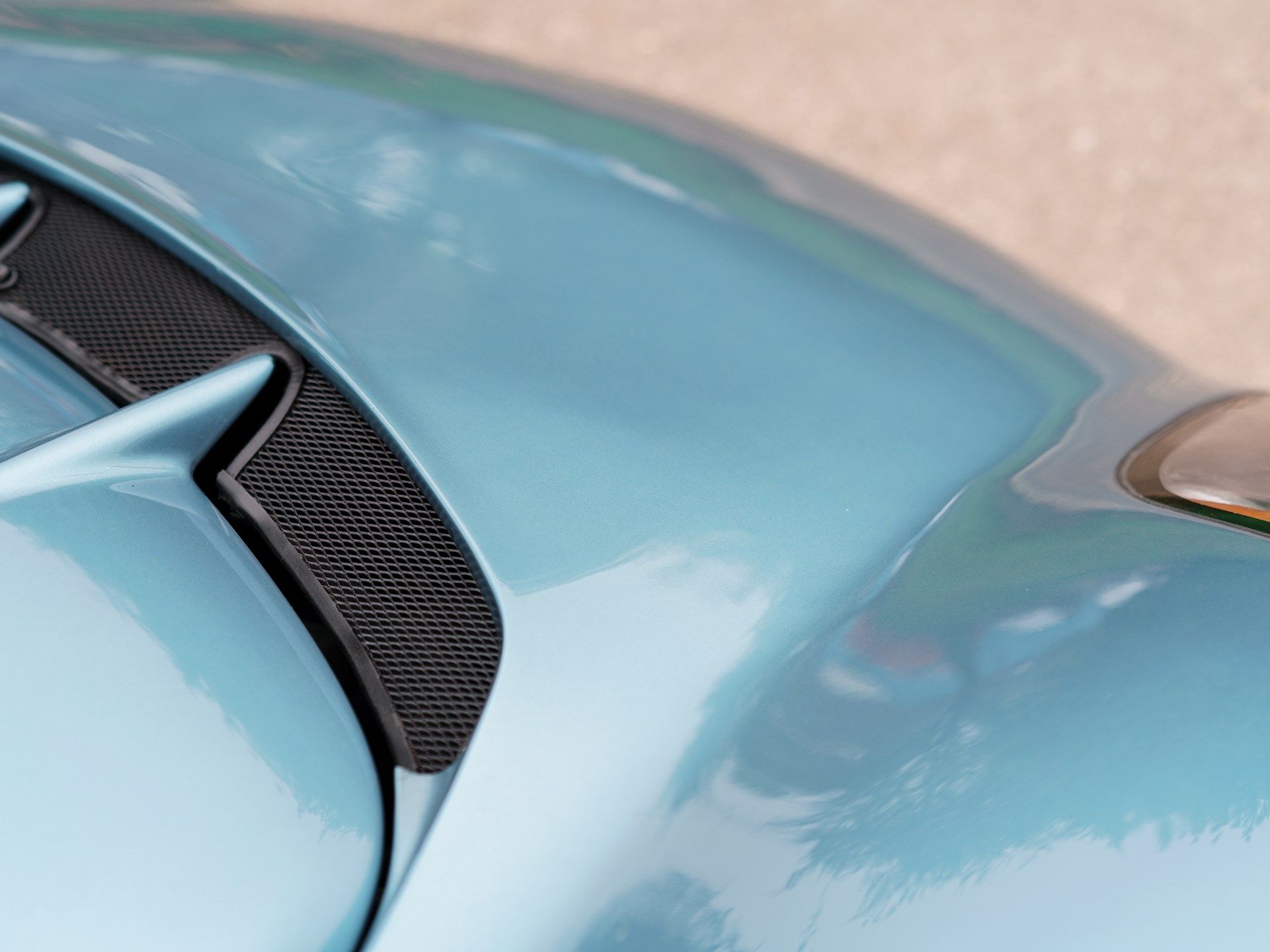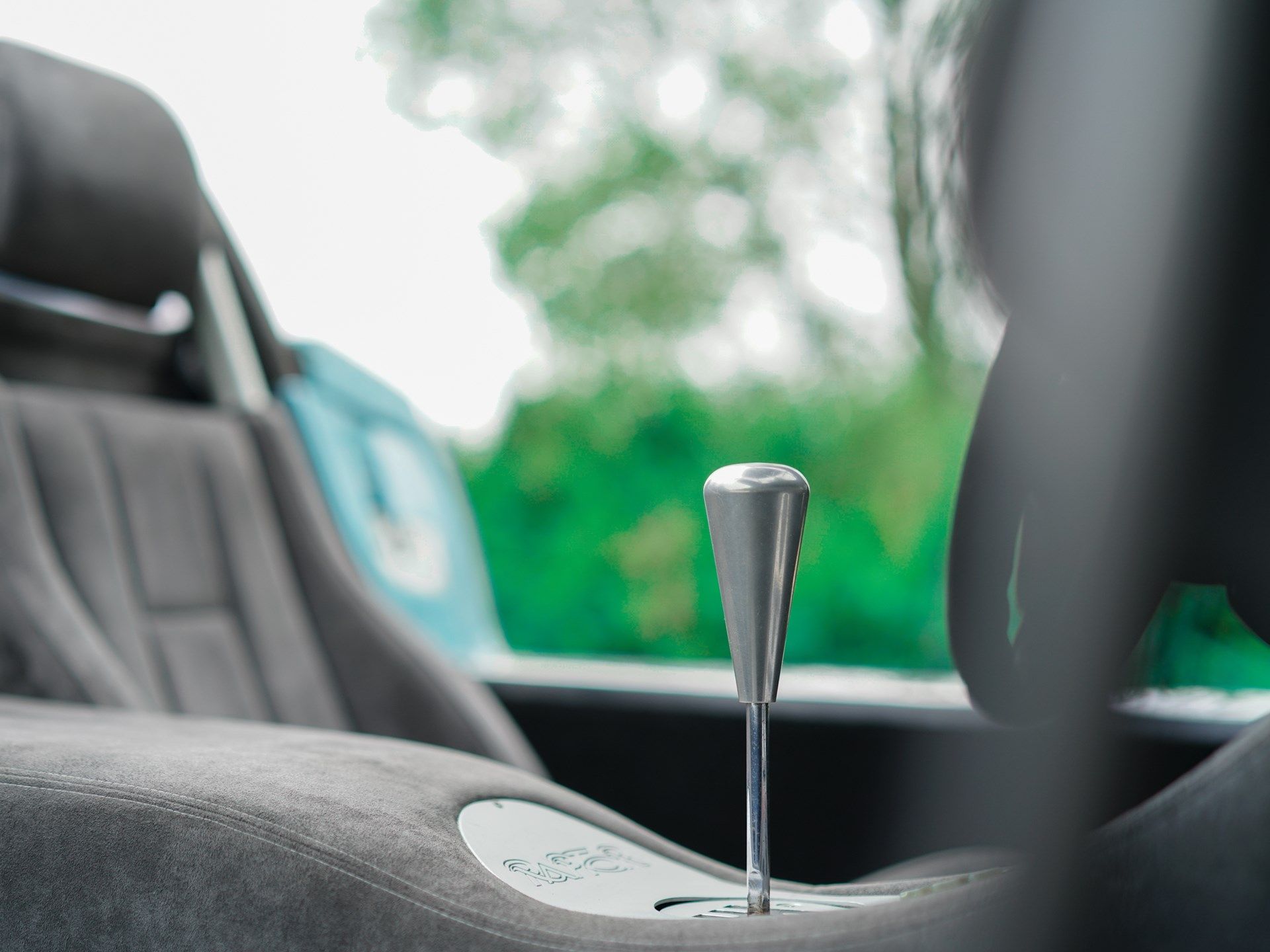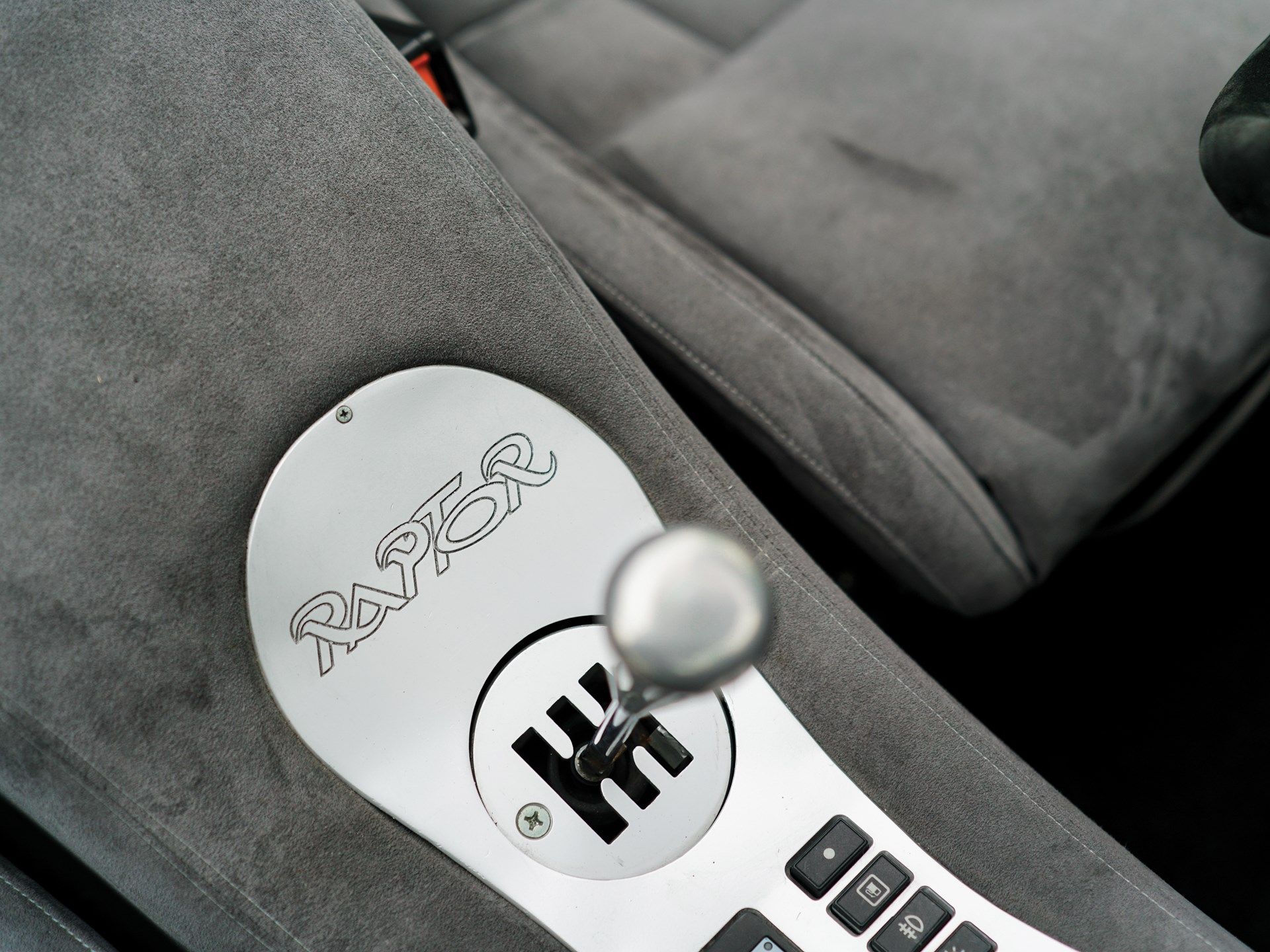A roof that lifts up to reveal the cockpit? Check! Futuristic cues that are both strange and appealing as you'd expect from a Zagato design? Check! All the goodies from the Diablo VT including the viscous central differential allowing for AWD and the magnificent 5.7-liter V-12 putting out almost 500 horsepower? Check! A carbon-fiber body created entirely through digital design and manufacturing process? Check! The Raptor could've kick-started Lamborghini's marriage with Audi in grand style at the end of the 20th century but, instead, the car you see here is the only one the Italians ever made.
It was the mid-'90s when Lamborghini realized that its 'lineup" needed to be refreshed. At the time, the company based in Sant'Agata Bolognese made only the mid-engined Diablo, successor of the Countach and a very potent car in its own right. However, the Diablo was hardly a forward-thinking car, AWD aside, and Lamborghini realized it needed to start thinking about its replacement and, on top of that, of something that could allow it to attract a wider audience. The key to increasing its client base, Lamborghini thought, would be to create a model that would sit below the Diablo in terms of performance while lacking none of that unmistakable Lamborghini DNA. The job of designing this new model, as well as the Diablo replacement, was in Zagato's hands and the legendary design house came up with the Raptor in just four short months, fast enough to allow Lamborghini to showcase the prototype at the 1996 Geneva Auto Show. Now, this one-off coach-built wonder can be yours, providing you've got a million or two to spare.
In pure Zagato fashion, the Raptor looks like what you'd draw at the age of 10
When you think about a 'raptor', you'll most likely picture the F-22 'Raptor' fighter jet or the agile velociraptor made famous by the 1993 feature film 'Jurassic Park' directed by Steven Spielberg and starring Richard Attenborough, Sam Neill, Jeff Goldblum, and Laura Dern. The sci-fi phenomenon, known for its breakthrough extensive usage of computer-generated images, kick-started a franchise that's still ongoing and, most likely, influenced a group of Italians in designing a car merely two years later.
The Raptor was one of these prototypes, created after President and Managing Director Mike Kimberley approached Andrea Zagato with the intention of cooperating on a number of projects. The Raptor would be the first and would be followed by the 1998's Canto (by then, however, Lamborghini had been taken over by Audi). Swiss Alain Wicki worked closely with Zagato on behalf of Lamborghini and had a tough job on his hands as the 1996 edition of the Geneva Auto Show, the stage on which the Raptor was supposed to be shown off to the entire world, was just four months away at the time development started in earnest.
The tight deadline would've probably scared off other coachbuilders but Zagato had an ace up its sleeve. The Italians were among the first to have a fully CAD-assisted design and manufacturing process. This meant the whole design phase and preliminary testing took place using computer renderings, saving time that would've otherwise been spent building and testing clay scale models.
In the front, the Raptor sports a wide, narrow mouth that takes up the entirety of the front apron below the edge of the almost flat front deck that comes down from the edge of the windscreen. The two, elongated headlights are placed on either side of the nose and feature one main beam with the indicators nestled between it and the day-time running lights placed outboard. The main inlet below features two angled bars that separate the central opening from two side vents with a pair of circular holes each. The front deck features its own openings, but they face the windscreen. Two ridges visibly rise from the uniform surface of the front lid to direct air exiting through that rear-facing three-piece mesh grille.
The two-tone theme is continued around the front, the lower bumper being colored in grey while the rest of the car features a very 90's tint of sea-green. The Le Mans prototype-esque windshield is narrow, curved, and sits flush with the side windows, without visible A-pillars.
Viewed from the side, the Raptor is just beautiful. The curved line of the front fenders continues across the top of the doors and keeps going up, above the rear fenders. The outline of the doors, that meets the outline of the rear deck towards the rear quarter panel, makes you believe that the car features Lamborghini's typical scissor doors or, maybe, dihedral doors. But that's not the case.
What Zagato's done is make a standalone unit out of the doors, roof, and windshield. Thus, the whole upper part of the car opens up like a clamshell to reveal the interior, swiveling forward. You might've seen a similar solution applied in the case of the gorgeous Maserati Birdcage but that was a decade into the future at the time when the Raptor was unveiled in '96.
The rocker panels are grey and feature a rounded air inlet piercing through the sills. Just above that, on the edge of the rear deck, there's the unmistakable Zagato 'Z' logo. The exterior rear-view mirrors, as well as the side indicators, are attached to the sides of the clamshell or what makes up the doors in a traditional car. The Raptor rides on simple but elegant five-spoke, 18-inch rims made out of magnesium. They may look dated now but, on this car, they work wonders as they aren't flashy at all.
In the back, the Raptor features a simple fascia. The central panel is guarded off by a ridge that comes down from the top of the fenders, goes around the rear grille, and then goes back up again in a continuous line. Apparently, continuous lines were the theme of Harada's team. That center panel is filled by a rounded grille with three horizontal slats stemming from the bodywork. Atop this grille, there's a narrow single-element taillight with the name 'Raptor' written on it.
Four exhaust tips placed on either side of the number plate complete the rear fascia of this supercar. As in the front and along the sides, the lower part of the rear is grey. It's interesting to point out that the rear deck sports a pair of louvered, oval vents. They are placed to the right and to the left of the central air snorkel. The rear deck lifts up in its entirety with hinges at the rear.
Jump over the tall sills of the Raptor and you'll be welcomed by a fully functional cabin covered in Alcantara leather. You usually see the rim of the wheel being wrapped in Alcantara or the side bolsters of the seat but not the whole interior. In the Raptor, though, even the double-bubble half-dome that comes over the top of the dash and is part of the clamshell is wrapped in Alcantara.
From the inside you can see the concealed A-pillars that seem, by 2019 standards, abnormally thin. The top part of the dash that moves up with the doors and the roof gives the impression of a wraparound dashboard as the Alcantara extends below the side windows, above the bodywork-painted sills that are visible from inside the car.
The wheel isn't your typical Diablo steering wheel in that it is - surprise, surprise - wrapped in Alcantara. A big 'Z' takes pride of place in the middle as there are no 'Lamborghini' logos on this car because it never received the green light to enter series production in Sant'Agata Bolognese. The tall transmission tunnel/center console separates the two bucket seats of the driver and the passenger. The tall gated shifter that commands the six-speed manual transmission is placed within an aluminum surround that includes all of the buttons and knobs on the dash of the Raptor. All the buttons are jumbo-sized, including the hazard lights button, and there's even a digital screen below the top row of buttons for the seat controls and window defroster. Above that, an old-fashioned fuel gauge is located. The screws that keep in place this aluminum piece are visible to the eye proving Zagato didn't spend too much time assembling the interior.
The same impression you get after looking at the two air vents on top of the dash that look like the ultimate afterthought. They are placed on either side of a covered section in the middle where, most likely, the radio would've sat in the production model.
On the technical side of things, the Raptor is worthy of the 'Lamborghini' nameplate because the drivetrain was lifted straight from the Diablo VT. As the 'VT' part of the name suggests, this model was the highly awaited four-wheel-driven version of the standard Diablo unveiled in 1991. The '93 VT with its viscous central differential that first proved its worth on the LM002 was more stable than the standard Diablo and this surely helps in the case of the Raptor that lacks the fixed wing you'd find on a VT.
The chassis is simple in that it's a tubular space frame with tubes made out of steel. But weight is kept in check by generous carbon fiber usage in the manufacturing of the body. Effectively, the entire body is made out of carbon fiber which means the Raptor is as much as 660 pounds lighter than a standard Diablo tipping the scales at just 2,976 pounds.
By trashing conventional doors and also through the usage of lightweight materials, Zagato managed to make a true supercar out of the Raptor despite it not being at the receiving end of the updated VT engine that debuted a while later after the unveiling of the Raptor.
1996 Zagato Raptor specifications
|
Engine |
Lamborghini V12 |
|---|---|
|
Displacement |
5707 cc / 348.3 in³ |
|
Bore |
87.0 mm / 3.43 in |
|
Stroke |
80.0 mm / 3.15 in |
|
Compression |
10.0:1 |
|
Power |
492.0 bhp @ 7000 rpm |
|
Torque |
427.8 ft lbs @ 5200 rpm |
|
Top speed |
> 200 mph |
|
0 – 60 mph |
4.0 seconds |
Wicki, however, envisioned an insane optional extra for the Raptor, one that was fitted to the prototype: a Z-Engineering compressor that bumped the power up to an insane 620 horsepower, insane in the context of the Raptor's lack of Diablo standard safety features such as ABS and traction control. With all that oomph, the Raptor was said to go from naught to 60 in under four seconds making the Raptor almost as quick as the racing-oriented Diablo GT that was powered by the 575 horsepower V-12 from the Diablo SV. While Lamborghini never tried to go flat-out in the Raptor, it was calculated that a top speed in excess of 200 mph was possible.
With most of the oily bits taken from the Diablo, suspension is by parallelogram-action unequal length wishbones with anti-roll bars front and rear and front anti-dive and anti-squat geometry. The Brembo discs are fitted with oversized Alcon calipers for extra stopping power. The power-assisted mechanical rack and pinion steering is identical to that on any other VT as is the computer-controlled multi-point fuel injection of the engine. Compression ratio is 10.0:1 with dry-sump lubrication. A standard Diablo VT six-speed all-synchromesh ZF box was fitted to the car with a limited-slip diff.
After the Raptor was completed, it was shipped to Switzerland to be shown at the Geneva Auto Show. During the show, Lamborghini was open to taking orders for the Raptor and it is said at least three people were ready to put deposits to secure a build slot. After the show, the car was taken to Sant'Agata where the factory's test driver put it through its paces with respectable results on the skidpad despite the lack of electronic aids.
Alain Wicki, who became the car's owner after Lamborghini was done with it, hardly ever drove it but tried his best to see through the production of a small batch of 50 cars assembled by Zagato. With funds not available for the Swiss ex-skeleton racer, he eventually ditched these plans too and sold the car in 2000 during an auction held at the same time as the car show. An American collector bought it for just $216,371.88 at a time when a brand-new Diablo was priced at $240,000.
Eight years later, the car made a rare public appearance on the lawn of the Pebble Beach Concours. What is more, it was supposedly ready to be sold by auctioneers at the Blackhawk Collection but nobody rose to the occasion and the car remained with its American owner to this day. He kept it in storage since '08 so, whoever buys it during the November 30th RM/Sotheby's auction in Abu Dhabi will need to thoroughly check the mechanicals and refresh the underpinnings accordingly.
Still, this is a running and driving prototype that once stood proudly on the Lamborghini stand at a world-level auto show. It was important enough for Zagato that the Italians, through the pen of Harada, borrowed some cues from the Raptor and included them into future Zagato designs such as the 2008 Spyker C12 Zagato, and, more recently, the 2014 Lamborghini 5-95 Zagato. While RM/Sotheby's didn't release a price estimate on the Raptor, your run of the mill Diablo sells for over $300,000 and an SE30 (even without the Jota package) is as much as $500,000. In the light of all this, a $1,000,000 price tag seems fair for this unique piece of Lamborghini/Zagato history that definitely needs a new owner, someone that'll showcase it a lot more!

